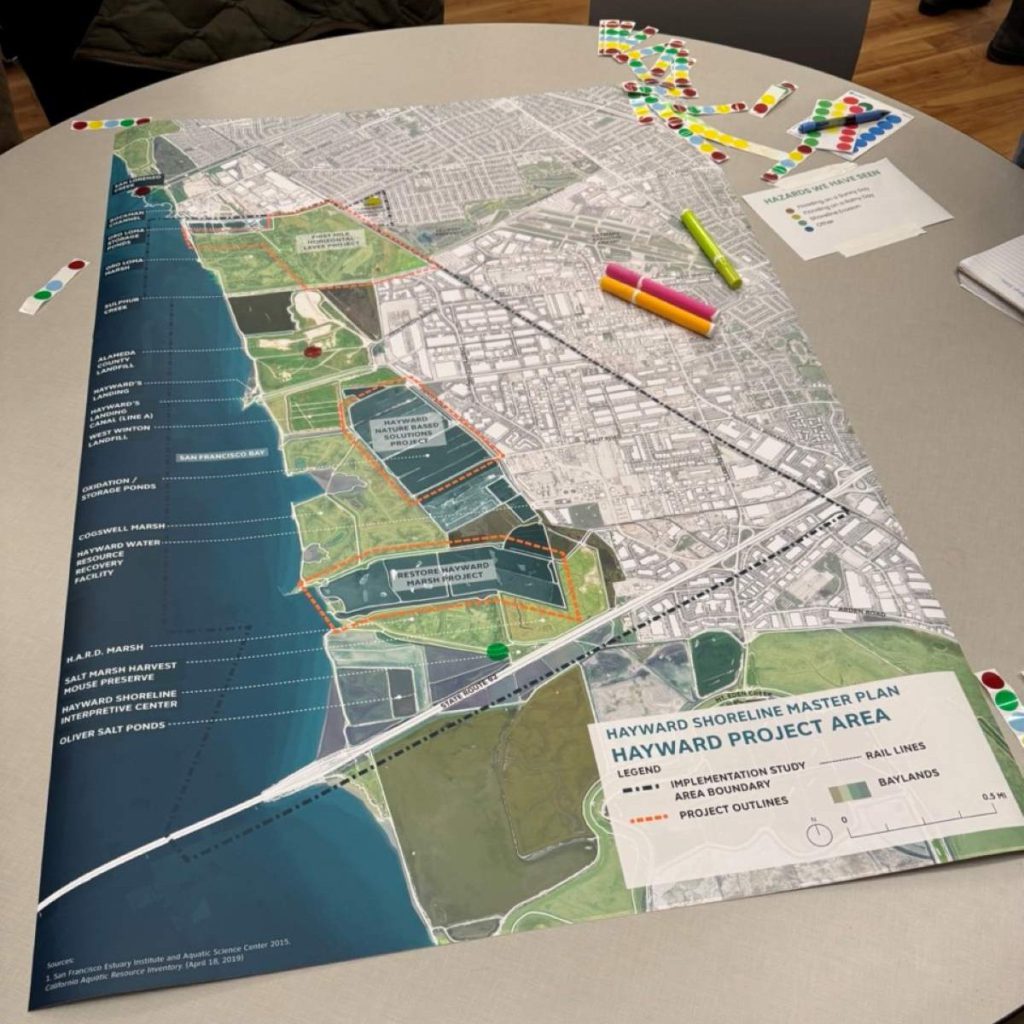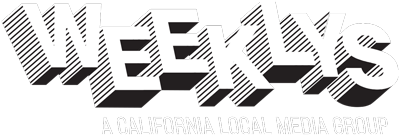King Tides are already happening in the Bay Area. One King Tide event happened just a couple of weeks ago. More are expected for December and January. They are a sneak peak of sea level rise, an increase of ocean mass due to climate change. When sea levels rise, it turns into an eventual flooding of communities. What stops sea level rise are natural barriers like marshlands.
Greenbelt Alliance recently launched the Hayward Shoreline Resilience Collaborative, a group of organizations that are working on projects that prevent sea level rise. Greenbelt Alliance held a public event introducing the collaborative on Nov. 18 at the Cherryland Community Center in Hayward.
Residents, environmental activists, engineers, architects, city leaders, recreational organizations and more gathered to learn about the Hayward Shoreline, the bodies of water at risk for sea level rise. The room was filled with round tables and every seat was taken. Event speakers said they were excited to see so many people attending the event.
Organizations working with Greenbelt Alliance include Hayward Area Recreation and Park District (HARD), East Bay Regional Park District (EBRPD), City of Hayward, SCAPE Landscape Architects and many more. They all had a goal of not only preventing sea level rise, but also preserving marshlands and protecting wildlife habitat.
Speakers at the event talked about three projects. The first involves the Hayward Area Shoreline Planning Agency (HASPA), a group of local organizations that advocate for the Hayward Shoreline. The group is a combination of EBRPD, City of Hayward, HARD and Alameda County Mosquito Abatement District. The shoreline includes the bayland area above the San Mateo Bridge.
HASPA worked with landscape architecture and urban design practice SCAPE to create the Hayward Regional Shoreline Adaptation Master Plan in 2021. The plan includes over 20 projects in the Hayward Shoreline that are meant to adapt to sea level rise and climate change.
“What that document really did, looking very closely with the members of the community, was to develop a vision for a full shoreline adaptation strategy that addresses both sea level rise, habitat enhancement and preservation,” said Hogan Edelberg from SCAPE.
Edelberg said sea level rise is already happening today, through King Tide events. “It’s gonna affect the water system, it’s gonna affect the Bay Trail and recreation. It’s really an amazing and very present stark reminder of what we’re all grappling with as these waters rise,” said Edelberg. “It starts to affect the places that we go and the habitats, and the ecologies that support these animals.”

The second project is the First Mile Project, which is about the construction of a natural levee called a horizontal levee, meant to immerse into natural habitat. After showing a picture of a traditional levee constructed at the Foster City Shoreline, Lindsey Yuen from Studio MLA said that type of levee has its limits.
“Here, we see that this is great, it helps with flood protection and sea level rise, but can it do more?” said Yuen. “I think this is what the horizontal levee project is trying to propose, thinking of that multi-benefit aspect to what we can really be doing when we do work along the shoreline, and others in our collective.
“The horizontal levee concept is thinking about in addition to sea level rise, in addition to flood mitigation, what else can it do,” continued Yuen. “It really is a place that you can provide habitat, a place where you can also address water quality.”
The horizontal levee includes a traditional levee but with plants and vegetation growing on it that can support marshlands and treat wastewater. The horizontal levee would be considered the first “living levee.”
The third project is the nature-based solutions project led by the City of Hayward. The project involves converting the Hayward Water Resource Recovery Facility’s former oxidation ponds into treatment wetlands. The project works alongside the horizontal levee project to create more trails for the community.
The audience was a part of the conversation as well. One person asked how the projects can happen without creating breeding grounds for mosquitoes, since the bugs thrive on still water. Another audience member said she never got bit by a mosquito while walking the Sky West Golf course because of natural mosquito control done by birds.
Another person asked how Indigenous people are currently involved in the project, since the Hayward Shoreline was their lifeline. Graham Prentice with the San Francisco Estuary Partnership said they are meeting tribes where they’re at capacity wise. Prentice said the organization had their first site visit a couple of weeks ago.




